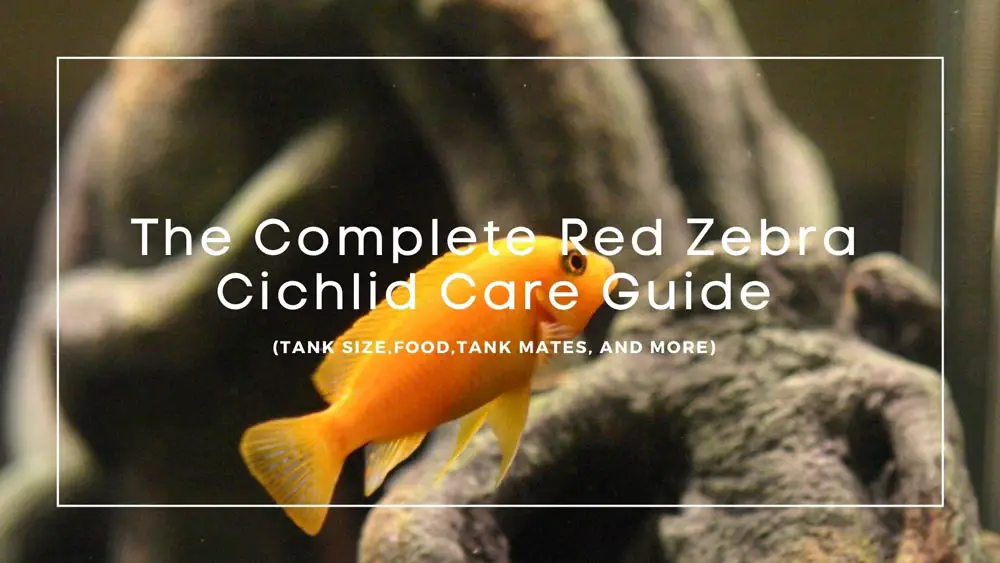


You won’t need to get a fancy lamp for this. This will ensure that the water is clear and healthy for your Jewel cichlids to swim and live in. Water hardness: This should stay in a neutral-soft range doesn’t exceed 12 dGHĭue to the kind of substrate you’ll be putting in the tank (more on that in the section below) you’ll likely want some kind of external filtration.Water temperature: This should stay between 75☏ and 80☏.Since these are tropical fish you’ll be doing what you can to replicate their natural environment. Failing to stay within these guidelines certainly result in health issues (some that you might not be able to reverse). You want to take water conditions very seriously when it comes to Jewel cichlid care.
RED ZEBRA CICHLID BREEDING FREE
If you’re an experienced aquarist who knows their fish very well, feel free to experiment with caution. We prefer to play it safe when it comes to the health and safety of our fish. We’ve heard from aquarists who have gotten away with pairs in as little as 30 gallons, but there are also plenty of others who’ve gotten fish killed trying this. If you intend on keeping multiple Jewel cichlids in the same tank you’ll want to increase the size by roughly 10 gallons to play it safe. A 40 gallon tank provides some extra room to help your fish be more comfortable and will give them the space they need. While a lot of people recommend a 30 gallon tank minimum, we think that something a little larger will make your life a whole lot easier. Tank size is the most important place to start when it comes to caring for your Jewel cichlids. If these aren’t taken care of, nothing else matters! Tank Size However, it’s also crucial to understand the essential tank and water guidelines they need as well. This is what you hear people talk about most when it comes to this fish, and it’s for good reason. Jewel cichlid care is something that revolves mostly around your ability to manage their aggressive tendencies. There doesn’t seem to be a strong theory about why this gap in size is so large when it comes to Jewel cichlids compared to other fish. While it’s quite common for fish to be larger in the wild than they are when kept in an aquarium, this is a rather significant difference. However, in the wild they can get as long as one foot. The average Jewel cichlid size is usually no more than 6 inches when in captivity. This bump is usually more pronounced when Jewel cichlid fish are younger.

Their head shape slants upward from their mouth and then curves into the start of their back at a very subtle bump. Their anal fins are shallow and trim and end exactly as far back as their dorsal fin does. Their dorsal fin starts about a third of the way down their body and continues to right before their caudal fin. The body of Jewel cichlids is fairly narrow and pointed. They definitely aren’t as popular as the red bodied fish, but you’ll see them quite often. The same colors are on their fins as well, but they are a bit more striped.Īnother color variation you see a fair amount is a dark blue or turquoise body with the same bright blueish-green dots. These spots are typically a light bluish-green and cover their entire body. These fish have a bright red/orange body with colored spots all over. There are a number of colorful variations that they come in, but the red Jewel cichlid is definitely the most common. The beauty of Jewel cichlids is something that can’t be denied. We’ll get more into the specific care guidelines to follow, but it’s worth noting the impact this can have on their lifespan. Besides the obvious health issues that frequent fights can cause, this also puts them in a state of stress.Ĭonstant stress can significantly shorten the lifespan of your red Jewel cichlid, which obviously isn’t fair to them. You see, Jewel cichlids are far more prone to get into altercations and fights in their tank. However, what makes them a little bit different is the importance of managing their aggression. Their lifespan is influenced by the quality of care and habitat they’re provided with (just like any other fish). There have been instances when this fish has lived up to 7 in captivity but it’s extremely uncommon. The average Jewel cichlid lifespan is roughly 5 years. This is useful to know because this is the kind of environment you’ll be trying to replicate when setting up their tank. They spend most of their time in smaller bodies of freshwater like rivers, streams, and lakes (among others). Another common name for them is the African Jewelfish. These fish originate from west Africa primarily but can be found a bit further east as well. The Jewel cichlid (scientific name: Hemichromis bimaculatus) is a popular fish in the cichlid family.


 0 kommentar(er)
0 kommentar(er)
